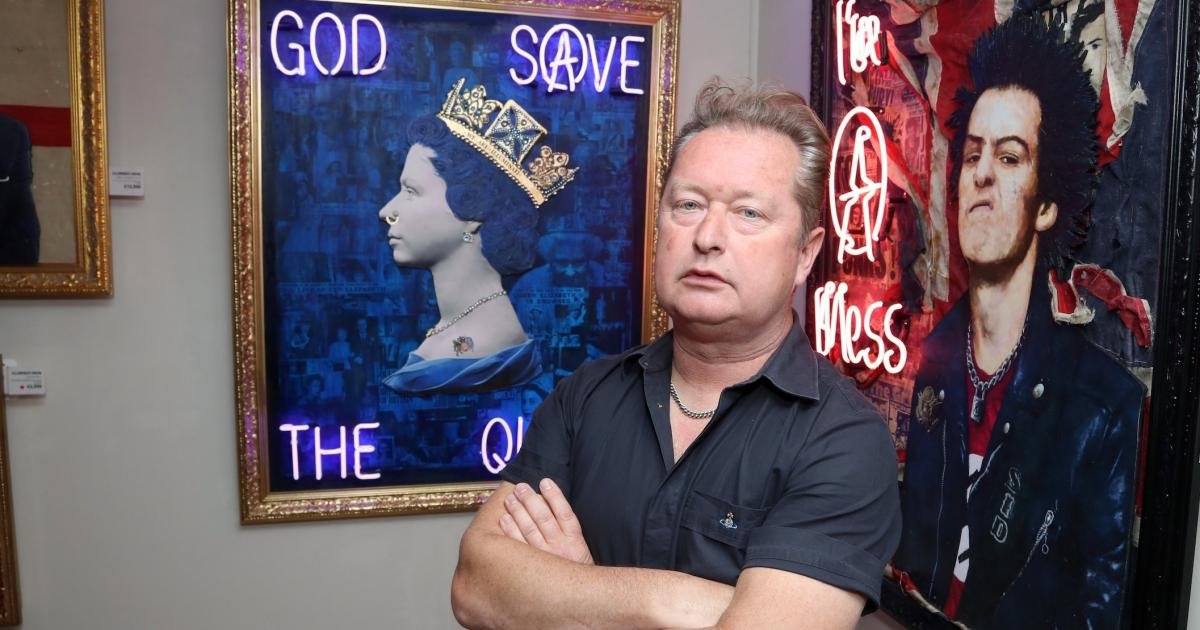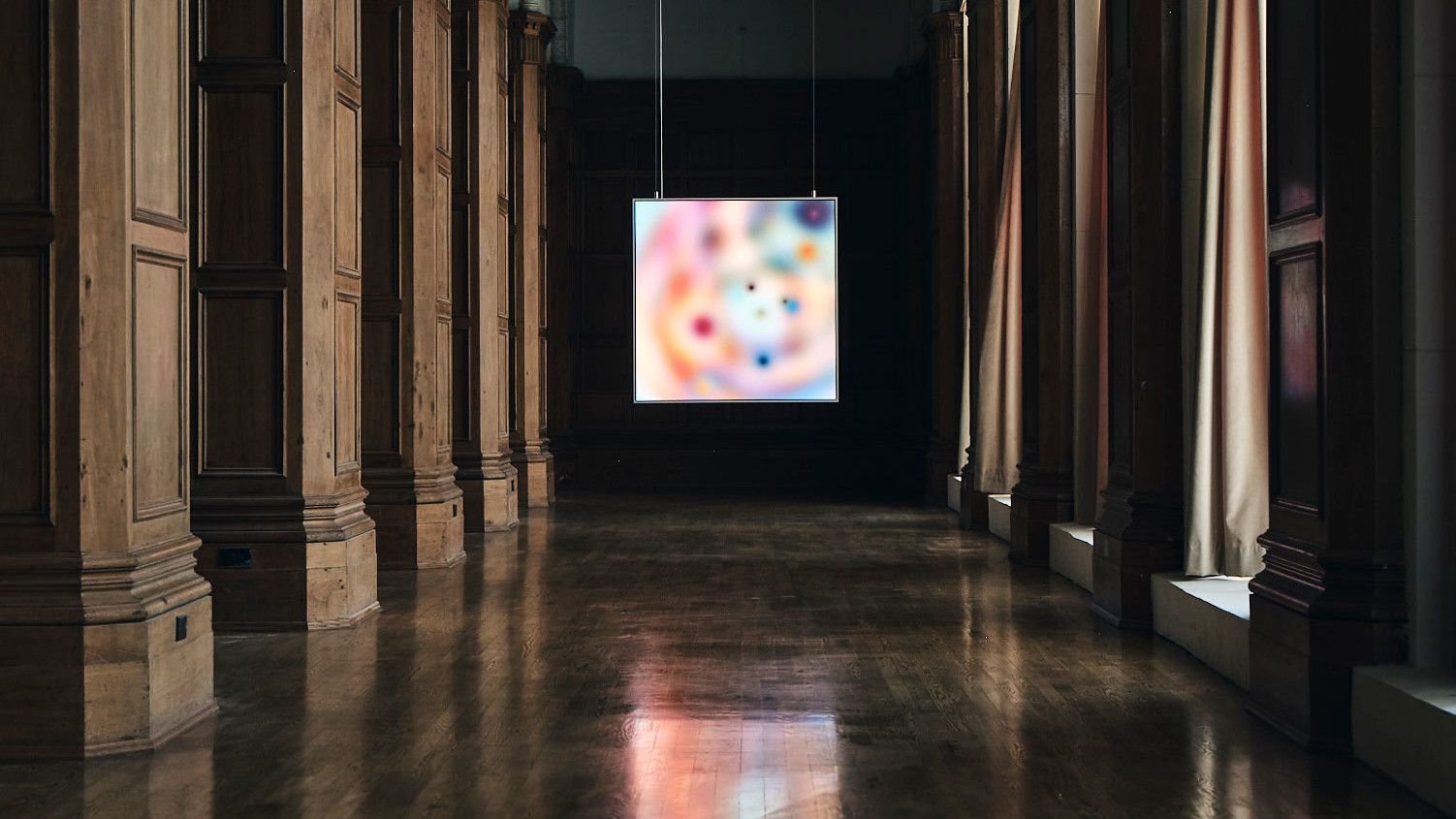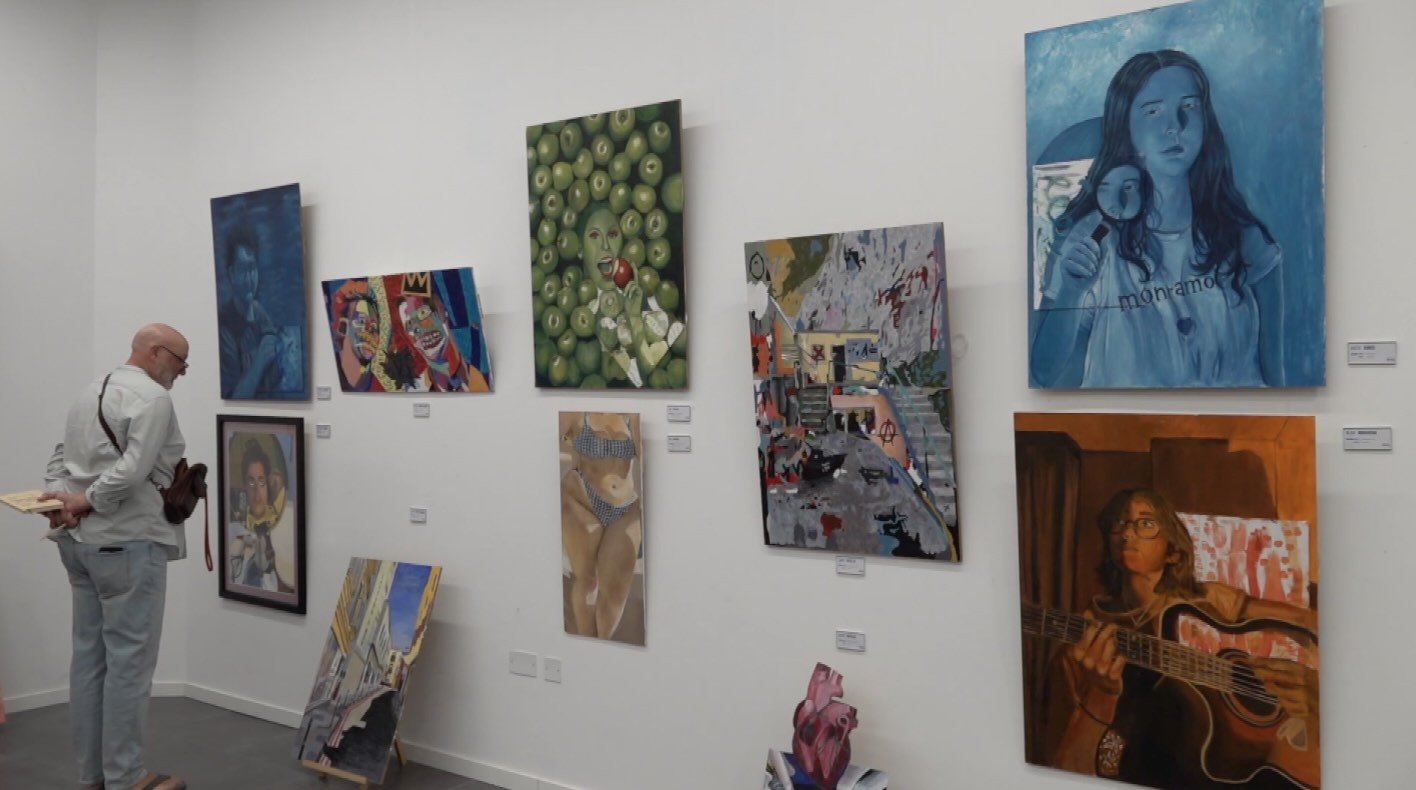Central to human culture and evolution is our capacity to create art. Recent archeological evidence suggests that humans have been creating visual art—cultural artifacts that appeal primarily to the visual sense—for at least 40,000 years1. Human capacities for music and dance are likely older2. Why did humans become such an aesthetic species? One answer is that the arts represent emotion and become central to how members of a culture share in the experience and expression of emotions that enable collective living3. Through the creation of art, cultures store conceptualizations and practices related to emotion, and through the experience of art, individuals come to a shared understanding of emotions and their place within culture4. Brushstrokes, colors, lines, symbols, and themes are used by artists to elicit rich aesthetic experiences in viewers.
Early philosophical accounts and recent theoretical models posit that visual art can broadly impact our neurophysiology, feelings, judgments, and social behavior, recognizing that emotional and cognitive processes play a crucial role in these experiences5,6,7. Although empirical research has begun to explore the emotions we feel and the qualities we perceive in response to visual art, a comprehensive taxonomy of the specific aesthetic experiences associated with visual art remains elusive. What is the structure of aesthetic experiences associated with visual art? Do people’s emotional responses differ from the feeling qualities they perceive in the artwork itself? Do aesthetic experiences have clear boundaries, or are they blended to create intermediate feeling states? To what extent do the emotions people feel in response to visual art correspond to the emotions of daily living? Answers to these questions are critical to understanding the processes by which visual art engenders aesthetic experiences.
Aesthetic experiences: The cultural archive hypothesis
In her influential books4,8, philosopher Suzanne Langer advances the thesis that the arts’ “purpose is to objectify feeling”. Each artwork, she details, is a unique kind of representation of emotion. In making visual art, members of a culture archive beliefs about what Langer called “life’s patterns”: concerns or themes of social living that are central to the human experience, like the nature of suffering, loss, unfairness, infidelity, the rise and fall in power, and life and death9.
Advances in the understanding of cultural evolution converge with this thinking. Culture can be thought of as an ever-evolving repository of shared knowledge, practices, and experiences that enables individuals to adapt to the challenges and opportunities in the natural, human-designed, and social environment10. Acts of imaginative culture, like the visual arts, evoke aesthetic experiences of emotion, enabling individuals to become sophisticated practitioners of emotions, and how they structure judgment, action, and social interactions3,11,12.
In keeping with this thesis, with forms of representation in the arts, members of a culture portray emotionally rich interactions, like those involving courage or jealousy or power, in stories, legends, myths, and visual artworks13. Members of a culture use visual techniques in paintings, figurines, and carvings to portray or represent profound interactions like childbirth, sexual relations, power dynamics (e.g., enslavement), and combat, and dramatize bodily expressions of emotion in dance, dramatic performance, and masks14,15,16. These cultural representations serve as memorable ways of eliciting shared emotional and cognitive experiences, inviting individuals into the understanding and practice of the patterns of a culture17.
The cultural archive hypothesis has been extended to select empirical studies of visual art. In an early study, art students were assigned to produce nonrepresentational line drawings conveying one specific expressive meaning, such as femininity, energy, depression, illness, anger, joy, or tranquility18. Another group of students then rated the extent to which the drawings conveyed the intended expressive content. Results showed agreement among judges, with 30–50% of raters reliably judging the meaning expressed by the art students in their nonrepresentational drawings. A more recent study showed that viewers spontaneously reported feeling similar emotion patterns, such as sadness and confusion, reported by the artists when making a piece of art, regardless of whether these had been intended19. Visual art seems to communicate emotions, which viewers routinely receive and understand.
These studies suggest how the arts might allow members of a culture to develop a shared understanding of the emotions, ideas, and perceptions that constitute the moral stances of their culture20. Through such emotional enculturation, people learn how to engage in vital interactions, such as negotiating status, redressing injustice, or tending to someone who is suffering, and embody their roles and identities within a culture’s pattern of relationships. The arts archive human emotion and the social patterns that unfold in their experience. Yet, which aesthetic experiences artworks elicit, and how they do so in viewers, is not well understood.
Past efforts to understand aesthetic experiences in response to visual art
The cultural archive hypothesis centers upon the questions we address in the present investigation: How do emotions archived in artworks elicit experiences in viewers? What is the nature of these aesthetic experiences? Past studies have begun to offer answers to these questions. One common approach has been to focus on broad evaluations of artworks, such as the individual’s felt pleasure/displeasure or mere liking/disliking21. Within this tradition, the animating idea is that hedonism, or broad feelings of pleasure, is core to aesthetic experience. Relevant empirical studies have captured the global evaluation of the work but not experiences of specific emotions, like anger, love, and compassion, or specific qualities attributed to the artwork, like peaceful, elegant, and warm.
Another tradition has focused on a small set of emotions, such as “joy”, “sadness”, “anger”, “fear”, and “interest”, providing key insights on experiences of basic emotions22,23,24. However, the space of emotional experience is now known to be much richer (see25 for a review). Advanced computational techniques applied to the study of facial–bodily expression, vocal bursts, prosody, the feelings evoked by music and video, and brain patterning triggered by emotional videos provide convergent evidence for at least eighteen distinct states found across all modalities and media, in addition to modality- or media-specific states, such as pride and shame in the face/body and the feeling of dreaminess in response to music14,26,27,28,29,30,31.
Past approaches to measuring aesthetic experiences in response to visual art have also focused on discrete or modal emotions with clear boundaries between categories. However, much of human emotional life is complex, involving states of mixed feeling, such as “nostalgia” and “craving”, and of a nuanced nature, such as “entrancement”, “horror”, and “grief”27. Although it is possible to experience pure emotions, we are likely to feel a mix of aesthetic experiences in response to a single artwork, such as a blend of awe, love, and reverence when viewing religious renaissance artworks, or variants of sadness in response to different subjects depicted in different artworks. Studying the full richness, blends, and gradients of aesthetic experiences requires sampling a wide range of experiences, a central focus of the present research. Studying a diverse set of artworks further enables this effort to more fully characterize the semantic space of aesthetic experiences in response to visual art. A concern of past studies is the reliance upon a limited number of artworks presented to viewers—5 to 75 pieces of art—which does not capture the great variety of cultural styles, eras, and regions that constitute the long history of visual art. Recent studies that examine a large and widely varying set of stimuli consistently show that categories of emotions traditionally seen as distinct are connected by gradients of blended experiences and expressions. For example, pure expressions of awe, surprise, and fear are interconnected by gradients of composite facial, bodily, and vocal displays that consistently convey intermediate meanings26,27,29,31.
Two studies of visual art that have sampled a wider range of feelings—upward of 75 feeling states—have relied on factor analysis32,33, which, for reasons we detail in the Results section, potentially mask the high dimensionality, or richer variety and blends, of aesthetic experiences. As a result, studies that used this analytical technique have usually identified no more than seven factors describing people’s aesthetic experiences, including pleasing emotions (e.g., joy, relaxation), epistemic emotions (e.g., interest, surprise), negative emotions (e.g., boredom, confusion), and prototypical aesthetic emotions (e.g., awe, being moved).
Studies have also largely ignored mental states associated with the imagination, states like mysterious or dreamy, a critical oversight given that some of the oldest visual artworks represent much more than ordinary life situations, such as a male figurine with a lion head or cave art scenes of hunters with bird and reptile features1,34. A central function of art is to portray alternatives to reality, what is hypothetical, beyond the senses, and even not possible or true35. Here, we consider the experiential aesthetic space beyond the feelings commonly elicited by everyday life events36.
Finally, while artworks elicit emotions that directly affect the viewer, they are also objects for perception and reflection, fostering cognitively mediated aesthetic experiences focused on artwork qualities, such as “disorienting”, “provocative”, or “mysterious”. Previous theories highlight the need to take both an artwork-oriented approach (modeling effects of the qualities of a piece of art) and a viewer-oriented approach (modeling the felt emotions) to understand experiences with visual art37. For example, recent empirical work using semantic network analysis shows that the language people use to describe their aesthetic experiences includes both artwork-descriptive features, such as beautiful and controversial, and the cognitive-affective impacts on the viewer, like enraptured and challenged38,39. People often blend felt emotions and perceived qualities in describing art, where emotions may derive from perceived qualities (e.g., a moving landscape makes us feel moved) or diverge from them (e.g., a tragic scene makes us feel love). It remains unknown whether aesthetic qualities perceived in the artwork constitute a core aspect of the aesthetic experience, or overlap with emotional responses, as previous studies have conflated their measurement or studied them as separate processes.
In sum, most previous studies of aesthetic experience have primarily been concept driven. Namely, scientists have tended to present participants with a limited set of artworks, captured experience with a limited array of items, such as pleasantness/unpleasantness or a small number of emotion terms, have not systematically examined perceived artwork qualities, and used outdated statistical techniques. The empirical results are often low dimensional, for instance, that visual art elicits a narrow range of emotions, that are typically clustered in a few categories, including pleasure, negative emotions, epistemic emotions, and prototypical aesthetic emotions, potentially under-representing the breadth and blending of aesthetic experiences in response to visual art. The present study aspires to fill these lacunae by taking a computational approach to aesthetic experience enabled by Semantic Space Theory.
Understanding aesthetic experiences: a semantic space theory approach
Guided by Semantic Space Theory, here we take a data-driven approach to mapping aesthetic experience25, departing significantly from the concept-driven methods of past studies. Semantic Space theory offers a computational approach that uses wide-ranging naturalistic stimuli and open-ended statistical techniques to capture systematic variation in emotion-related behavior across modalities (face, body, voice, neurophysiology, language25). New quantitative approaches to partitioning variance enable the examination of three properties of semantic space of experience: dimensionality, distribution, and conceptualization. The dimensionality concerns the categorical structure of the semantic space or the number of distinct experiences, which determines the complexity of the semantic space, ranging from a few coherent categories (low dimensional) to many different categories (high dimensional). The distribution examines whether the boundaries between the identified dimensions are sharp or overlapping, for example, determining if emotional experiences can be categorized in clusters with clear boundaries (e.g., anger and disgust) or exist along a continuum that allows for blended experiences (e.g., an intermediate state between anger and disgust). Conceptualization concerns the nature of the concepts that most directly account for variation in how people represent their subjective experiences, for instance, whether emotion concepts, like “awe”, “fear” and “serenity”, or aesthetic qualities, like “mystical”, “intricate” and “striking”, drive the representation of aesthetic experience.
In the present investigation, first, we build upon previous studies to survey a wide array of experiences, which enables mapping the complexity of aesthetic experiences: Participants reported on their experiences in terms of 103 items, comprising several dozen states in the expanding science of emotion28, variants and blends of emotions, states related to the imagination, and perceptual attributes of visual art. Second, experiences are evoked with a diverse set of stimuli, without assuming a one-to-one mapping between stimuli and specific experiences. Past studies have presented participants with up to 75 pieces of visual art. Here, we study 1457 artworks that cover a broad range of styles, eras, geographic regions, and cultures40. Drawing on such variation is critical to mapping the structure of aesthetic experiences. Third, new statistical techniques reveal the patterns of relations between experiences. These techniques depart from univariate approaches, such as correlations, t-tests, and factor analytic and principal components analyses (PCA), and model the latent structure of large-scale, multidimensional data, while preserving dimensions of meaning that are nuanced yet reliable25,27. We extend Semantic Space Theory to visual art, testing the following hypotheses:
Hypothesis 1: Dimensionality
The semantic space of emotion-related behavior appears to be rich, including multiple states across modalities in addition to modality-specific states, as evidenced by research on facial–bodily expression, vocal bursts, prosody, and brain patterning triggered by emotional stimuli14,26,27,28,29,30,31. We, therefore, expect aesthetic experiences in response to visual art to be high- rather than low-dimensional, eliciting a much wider array of distinct categories of experiences than typically thought.
Hypothesis 2: Conceptualization
Felt emotions and perceived qualities are widely theorized to represent different foci of our engagement with visual art—one viewer-focused and directly affective, the other artwork-focused and cognitively mediated. Given theoretical and empirical accounts of their distinctions37,38, we expect felt emotions and perceived qualities to be independent and integral aspects of aesthetic experiences as evidenced by their commensurate prediction of overall aesthetic appreciation of artworks.
Hypothesis 3: Distribution
Although there may be pure aesthetic experiences of clearly defined states, much of emotional response is found to be systematically blended rather than discrete. Recent studies examining a large and varied set of stimuli consistently demonstrate that traditionally distinct emotional categories are connected by gradients of blended experiences26,27,29,31. Therefore, we expect categories of aesthetic experiences to lie along continuous gradients of experience rather than within discrete clusters.







